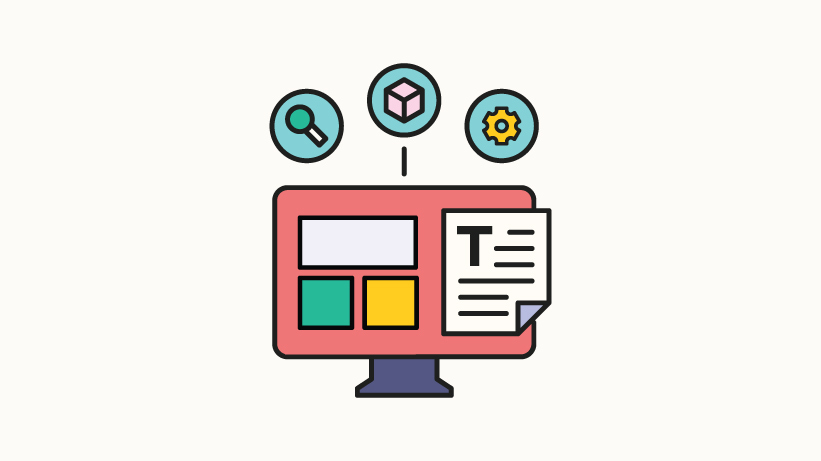5 User Experience Tips For Your eCourse
Did you know that it is a lot more expensive to acquire new customers than it is to keep existing ones? A study by Harvard Business Review found that it can cost five to 25 times more to acquire a new customer than it costs to retain an existing one. This explains why you have to watch out for churn when designing your eCourses. In fact, data from Bain & Company shows that increasing customer retention by just 5% can boost your profit anywhere from 25% to 95% [1]. With an understanding of the above facts, it becomes imperative to put more effort into User Experience (UX) when designing your eCourse. The following 5 UX tips focus on both the design and delivery experience of your eCourse and how they can be optimized to give you an edge.
1. Consider Multiple Course Mediums
While most eCourses tend to favor content in video or audio format, it might be a good idea to add other mediums.
Various studies have been conducted to compare the performance of students who have consumed content by reading to those who have consumed content through audio/video. Usually, there isn’t much of a difference—and, in some cases, reading (particularly, print text) came out on top. A particular study, comparing retention for students who learned via podcasts vs. students who learned via text, found that students who learned via text performed much better. Another study didn’t find much of a difference.
Regardless, you want to ensure that you give people as many mediums as possible to consume your course content. This includes video, audio, text, visuals, and interactive means. Besides ensuring better comprehension of your content, delivering your eCourse content through many different mediums will not increase your chances of retaining users from regions where it is difficult to access media content due to connectivity issues.
2. Develop A Follow-Up System To Boost Course Completion
Do you know that the average Massive Open Online Course (MOOC) completion rate is 15% [2]? In other words, less than 20% of enrollees complete the online courses they sign up for.
Churn is bound to be high when less than 20% of enrollees complete your eCourse. This can be addressed, however, by developing a follow-up system that can help get more people to complete your eCourse.
For example, every course should have an email follow-up system that not just sends people reminders to actually go through each course lesson, but that also sends a summary after lesson completion and prompts them to complete course-related tasks. You shouldn’t stop at that. Take things up a notch by leveraging text messages or push notifications to remind people to actually check out course lessons.
3. Enhance The Speed Of Your Delivery Mechanisms
We are an impatient generation, and we’re getting increasingly impatient, thanks to technology. If it takes too long to access your course lessons, many people would rather not go through the hassle. As such, you want to make sure the mechanisms used to deliver your eCourse work as optimally as is possible.
There are so many ways you could go about enhancing the speed of your delivery mechanisms. For example:
- Did you know that many people will abandon a website that takes longer than three seconds to load [3]? If your eCourse website takes too long to load, not only will the sign-up conversion rate be poor but churn will also be high. You can address this by working on your host; for example, an analysis of WordPress web hosts found that some web hosts are two times (or more!) faster than others. If your course is hosted on WordPress, this means you want to carefully select a host optimized for the CMS. This goes for all other LMSs as well. You should also consider using a CDN and enabling caching to ensure a faster website experience.
- Consider having several formats of your media content to make it much faster to access. For example, a 1.4GB video lesson can be compressed to lower definition videos of about 700MB and 350MB. Users can then be shown all the three options so that they are able to watch accordingly, depending on their device, network availability, and preference.
- Consider introducing options to allow fast learners and more committed students to complete their courses at a much faster pace. Don’t be too rigid about having all students complete the course at the same time if that’s possible.
4. Set Expectations And Be Consistent
You might think it is wise to constantly surprise learners, but you’ll find being consistent to be more rewarding. Whether it is through the delivery mechanism used, the look and feel of your course, or other aspects of your course, it is a good idea to set expectations and be consistent with the expectations set.
When users know what to expect, they are more likely to fit into that expectation and progress accordingly. Research shows that we generally resent (and resist) change and that we tend to prefer things to be the same way they have been and what we are familiar with. Design your eCourse armed with this knowledge!
5. Set Milestones And Introduce Rewards
Finally, you should set milestones and introduce rewards for students of your eLearning course. For example, students could be rewarded when they complete 10% of your eCourse, then 25%, 50%, 90%, and 100%. They could be given a badge that publicly shows their completion rate. This kind of reward encourages individual students and gives them something to aspire toward. It also pushes other students who notice it to want to achieve something similar.
References:
[1] 75 Customer Service Facts, Quotes & Statistics
[2] MOOC Completion Rates: The Data
[3] 41 Website Speed Statistics Important To Google









